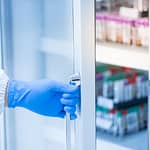A large number of drug products are light sensitive and therefore their formulated products may degrade during manufacturing, storage, and administration. This could result in potency loss, altered efficacy, and adverse biological effects.
Testing guidelines for potential photolabile substances are described in ICH Q1B and aim to standardise the procedure used to establish and demonstrate that, as appropriate, light exposure does not result in unacceptable change. ICH Q1B was published in 1996 but even today, questions still arise on how to conduct a meaningful photostability test.
Typically photostability testing is carried out on a single batch of material using a systematic approach as described below:
- Tests on the active substance
- Tests on the exposed product outside of the immediate pack, and if necessary
- Tests on the product inside the immediate pack and if required
- Tests on the product in the marketing pack
Occasionally customers ask why it is sometimes necessary to perform studies on the drug product, even in the absence of photodegradation in the API. This is because interactions between the excipients and the active substance can occur which can lead to photodegradation of the product.
In order to protect patient safety and to satisfy the Regulators, it is recommended to perform a photostability evaluation on the final drug product.
Light Sources
Any light source that is designed to produce an output similar to the D65/ID65 emission standard such as an artificial daylight fluorescent lamp combining visible and ultraviolet (UV) outputs.
For confirmatory studies, samples should be exposed to light providing an overall illumination of not less than 1.2 million lux hours; and an integrated near ultraviolet energy of not less than 200 watt per hour/square meter to allow direct comparisons to be made between the substance and product.
Aluminium wrapped dark controls may be used simultaneously to evaluate the contribution of thermally induced change to the total observed change.
Photostability Chambers
Astoriom manufacture their own Photostability chambers and perform an annual Performance Qualification to ensure that the chamber works to exacting standards.
The intensity of the light sources is not specified however, the intensity impacts the time needed to achieve the required exposure levels. At Astoriom, just under 14 days is required to achieve the required exposure levels. Higher intensity light sources are available on the market that would result in shorter exposure times, such as Xenon arc lamps. However, higher intensity light sources typically mean additional heat that can be difficult to control, resulting in thermal degradation of a material. Using our photostability chambers, the temperature can be controlled to 25°C +/- 2C.
If you would like to learn more about Photostability contact us below or register for our free on-demand webinar here.




